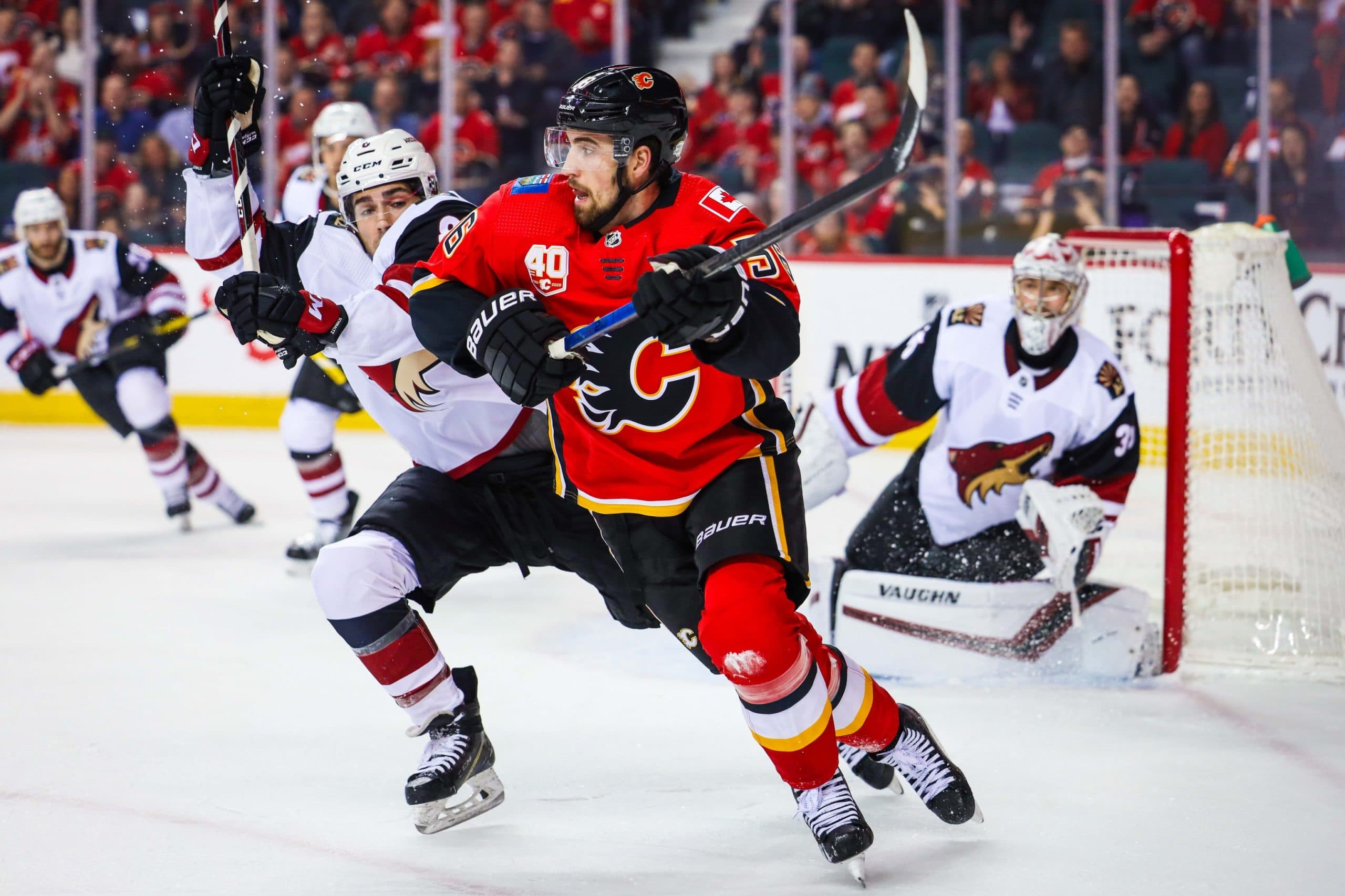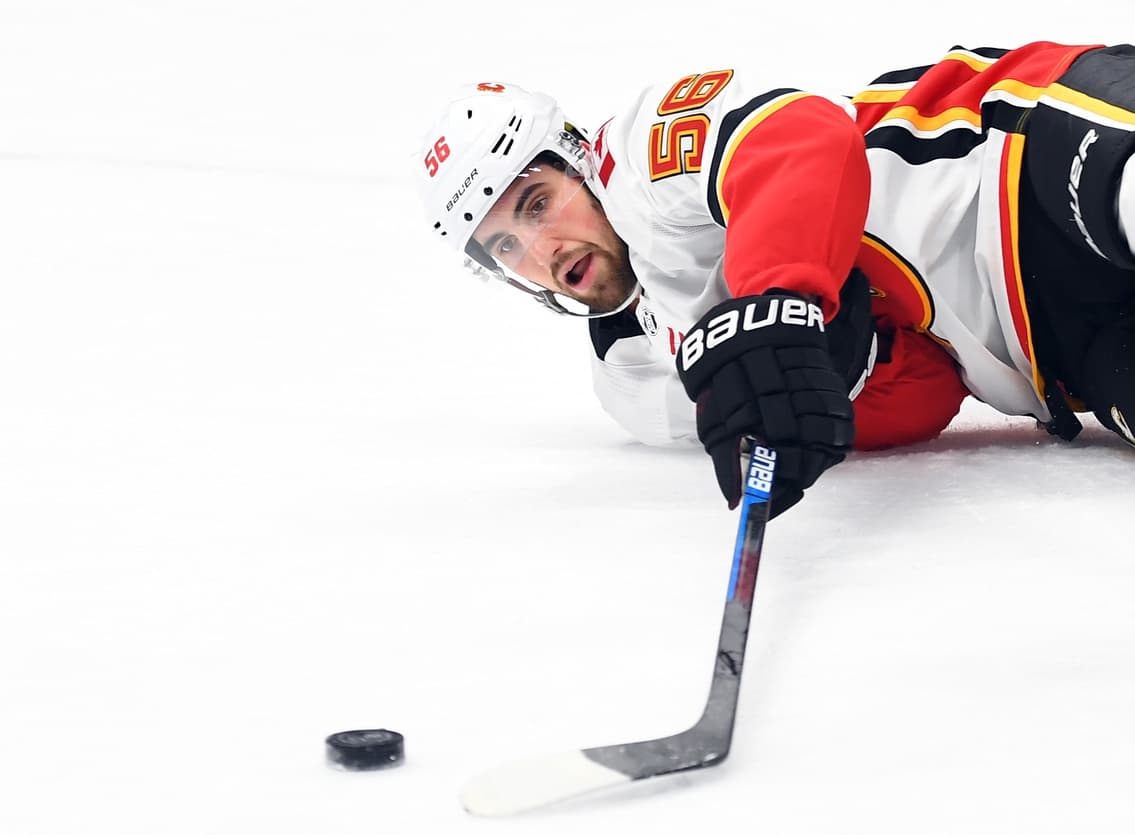There’s plenty of merit to re-signing Erik Gustafsson

Calgary’s acquisition of defenceman Erik Gustafsson at February’s trade deadline (remember that?) was one of the team’s most intriguing in quite some time. That’s partly because the Flames have been relatively quiet at recent deadlines, but also because Gustafsson is an interesting study. As offensively gifted as they come, Gustafsson had his ups and downs in a short and fractured stint with Calgary.
Knowing how specialized his skills are, though, I saw enough from the pending unrestricted free agent to convince me bringing him back on another contract is the way to go.
A unique skillset
The first thing that jumped off the page upon Gustafsson’s arrival were his 2018-19 numbers with Chicago. With 17 goals and 60 points in 79 games, Gustafsson was one of the league’s highest scoring defencemen a season ago. While those numbers dipped this year, it’s easy to tell where Gustafsson excels this most: on the offensive side of the puck.
The Flames immediately put Gustafsson to work on their number one power play unit, replacing Mark Giordano who had been there for the better part of two seasons. I liked the look of Gustafsson in the short seven-game stretch between the deadline and the pandemic pause in March; he put up three points in that time, all on the power play.
Gustafsson brings a unique blend of skills to the top of a power play unit. He skates well, which allows him to reach clearing attempts better than most. Gustafsson always seems to think two or three moves ahead, which limits his decision-making time once the puck is on his stick. He’s good at getting pucks through traffic for tips and deceptive shot-passes. All of these things are coveted for a power play quarterback.
While we saw some of this on display prior to the pause, Gustafsson motivated to show more upon Calgary’s return. During training camp, Gustafsson stated he had been too conservative and hesitant on the power play, something he was committed to changing in the team’s return to play. From this vantage point, I believe he succeeded.
While power play metrics are hard to read as gospel, they certainly jumped off the page in the ten games Calgary played against Winnipeg and Dallas. Gustafsson led the Flames with 36:34 of power play ice time in August and the team outscored their opposition 7-0 with him out there. The rest of Gustafsson’s on-ice metrics in Calgary’s return to play were impressive, as charted below courtesy Natural Stat Trick.
| TOI | CF-CA | CF% | SF-SA | SF% | HDCF-HDCA | HDCF% |
| 36:34 | 78-6 | 92.9% | 44-5 | 89.8 | 14-1 | 93.3 |
Of course, underlying power play numbers need context. They’re supposed to be heavily slanted, so seeing a bunch of numbers in a vacuum doesn’t mean a lot. So, for sake of comparison, I compared Gustafsson’s work in the playoffs with Mark Giordano’s power play metrics when he was on the number one unit during the regular season.
| TOI | CF-CA | CF% | SF-SA | SF% | HDCF-HDCA | HDCF% |
| 160:28 | 281-49 | 85.2 | 157-32 | 83.1 | 65-8 | 89.0 |
Gustafsson’s on-ice outputs are definitely better than Giordano’s, albeit with about a fifth of the sample size, which is a significant disclaimer when comparing. It’s also important to note the four forwards on Calgary’s top unit play a part in Gustafsson’s above numbers. That said, I don’t think it’s a fluke the number one power play was statistically better with Gustafsson at the helm.
Being realistic

If the Flames were to explore bringing Gustafsson back on a new contract, it has to be with the knowledge of what he is: a very good power play specialist with significant limitations at five-on-five. At 28, Gustafsson has essentially established what he is, so assuming it’ll be different going forward isn’t advised.
Defensively, Gustafsson struggles, which we saw many times during his first postseason with Calgary. It’s why he’s best suited on a third pairing on a deeper blueline where he can be protected and sheltered. In his four NHL seasons, Gustafsson has never had an even strength offensive zone start ratio lower than 55%, which is by design. He excels offensively and struggles defensively, so it makes sense to play to his strengths and feed him a ton of time on the man advantage.
Now it becomes interesting when we start talking contract. The fact Gustafsson fell more than 30 points short of his career high this season certainly helps the Flames. Also helping Calgary’s negotiating stance is a flat salary cap and stunted economic conditions. Could Gustafsson hit it big in free agency? Maybe, but I’m skeptical seeing as how the rest of the league knows we’re talking about a specialized player, too.
It’s hard to read how free agency will work this fall, so all we can really do is try to ballpark things. Because I don’t think Gustafsson has a ton of leverage, this year specifically, I wonder if something like three years at $3 million annually is realistic. The term is more of a priority than the dollar figure, as $3.5 or $4 million wouldn’t be overly difficult to fit under Calgary’s cap. But considering Gustafsson’s age and limitations, anything more than three years seems risky.
Recent articles from Pat Steinberg




